Abstract
The National Infant Mortality Surveillance (NIMS) project used linked birth and infant death certificates to calculate birth weight-specific infant mortality risks for the 1980 U.S. birth cohort. Record linkage depends on complete registration of vital events, interstate exchange of vital records, accurate information on certificates, and a comprehensive linkage system. States reported 2,604 unlinked infant death certificates for 1980, ranging from 0 to 397 per State. Age at death for these infants ranged from 1 minute to 11 months. More than 41 percent of the unlinked death certificates were for postneonates, compared with 32.5 percent found in the cohort's total infant death experience. Only 38.2 percent of the unlinked infant death certificates showed strictly intrastate events (birth and death occurrence, and residence at death all in one State), compared with 92.9 percent in the cohort's total infant death experience. Estimates of the percentage successfully linked by State ranged from 86.0 to 100.0. After adjusting for the certainly unlinked infant death certificates, nine States' infant mortality risks increased by more than 0.2 per 1,000 live births. Improvements are needed both within and between States to ensure more complete birth and infant death certificate linkage.
Full text
PDF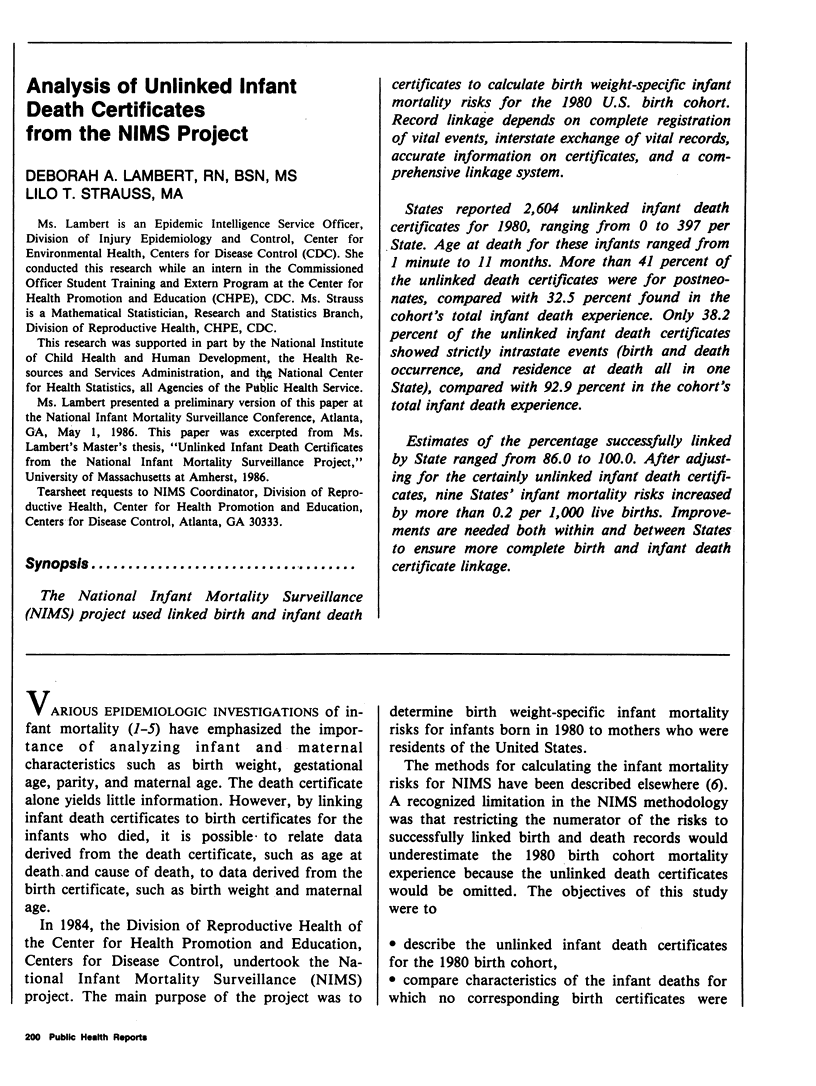
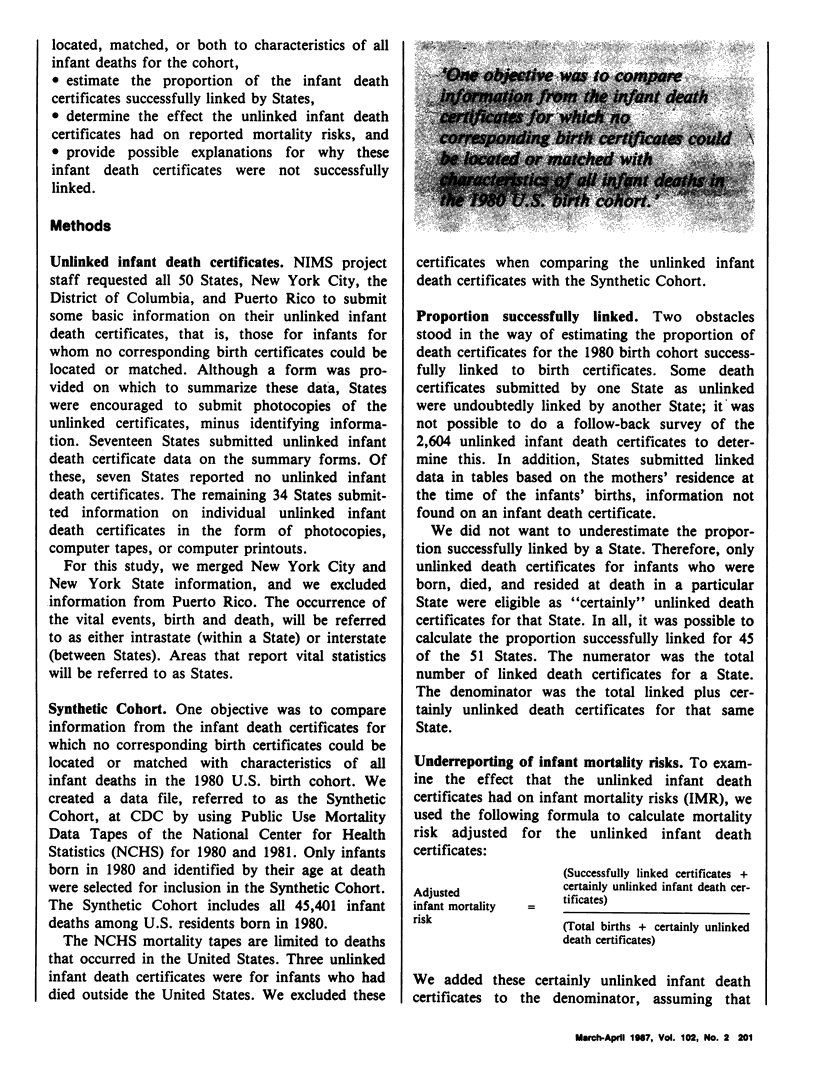
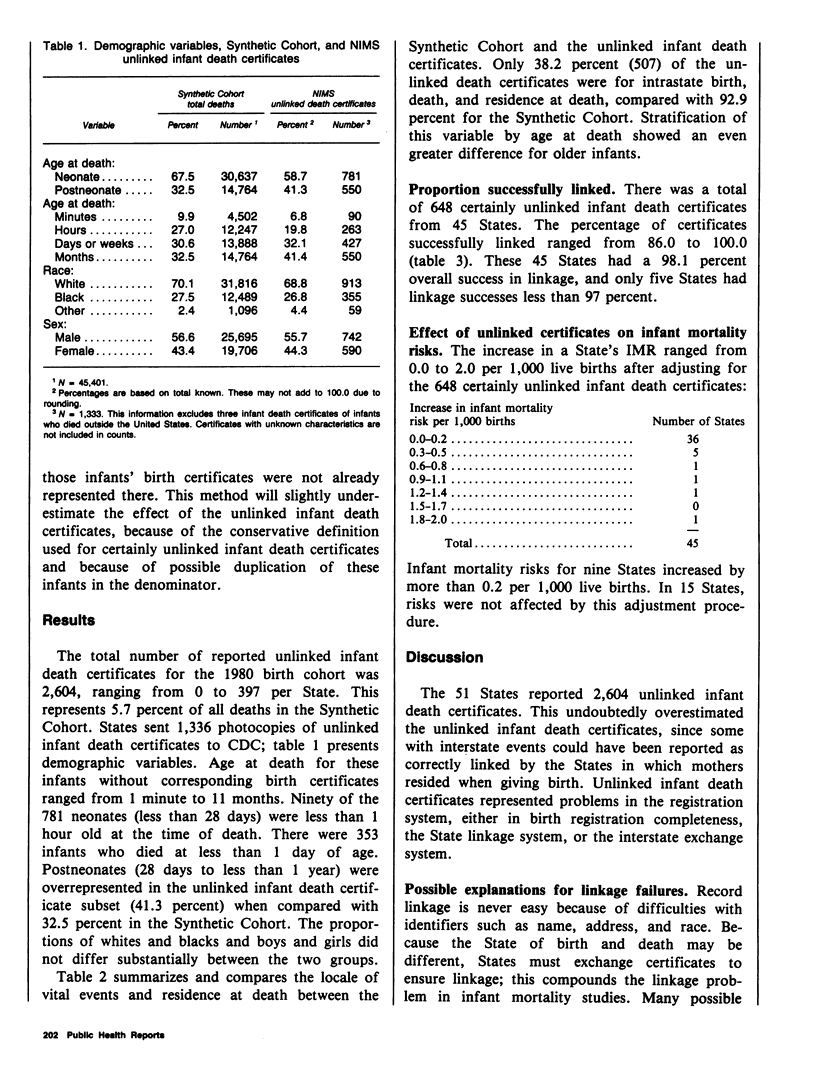
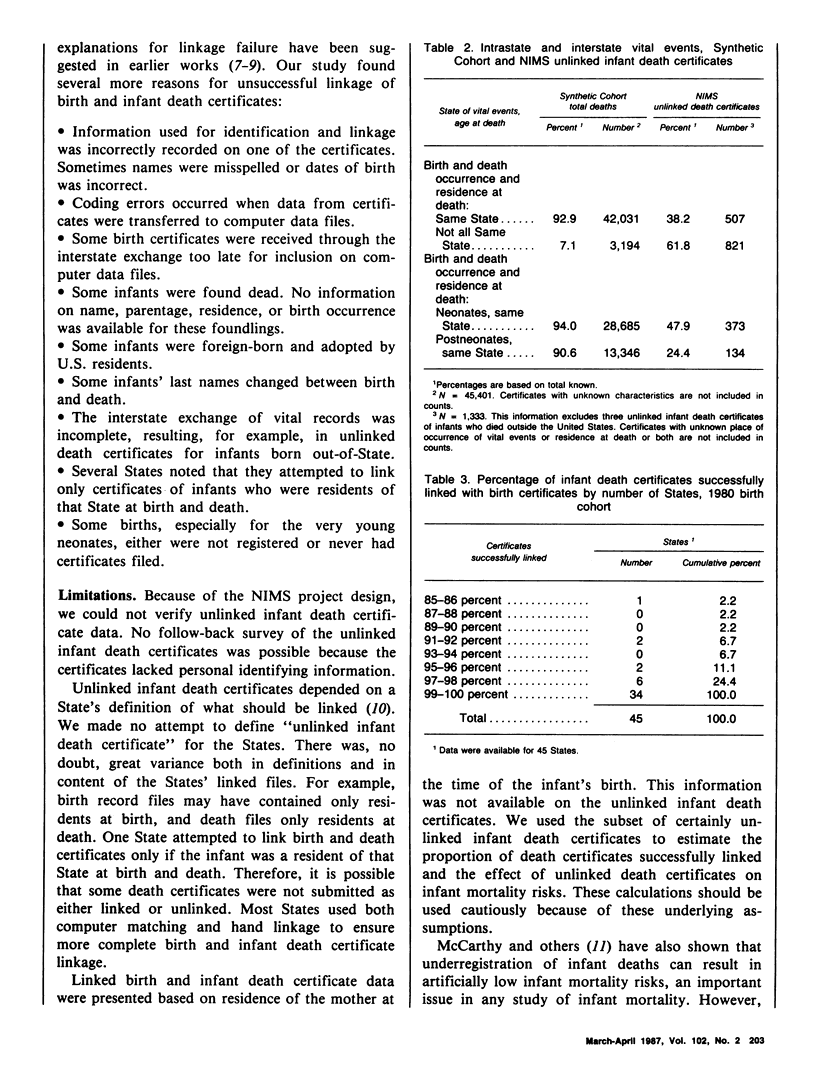
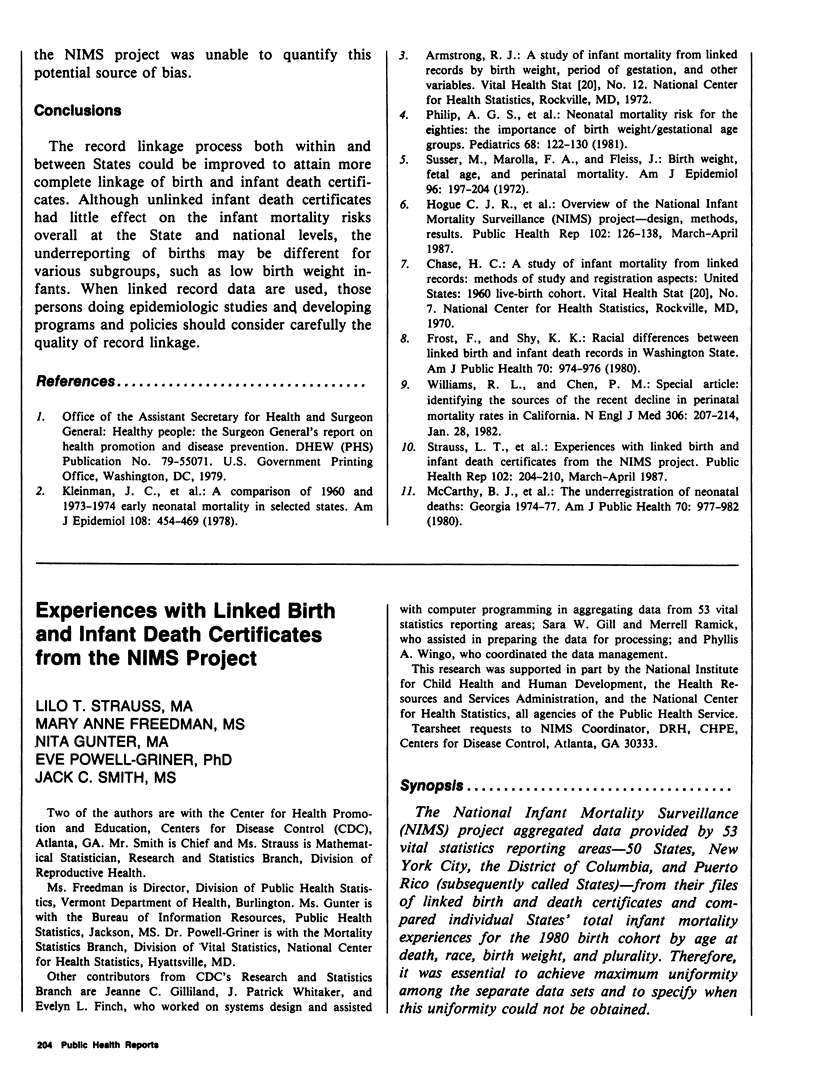
Selected References
These references are in PubMed. This may not be the complete list of references from this article.
- Frost F., Shy K. K. Racial differences between linked birth and infant death records in Washington State. Am J Public Health. 1980 Sep;70(9):974–976. doi: 10.2105/ajph.70.9.974. [DOI] [PMC free article] [PubMed] [Google Scholar]
- Hogue C. J., Buehler J. W., Strauss L. T., Smith J. C. Overview of the National Infant Mortality Surveillance (NIMS) project--design, methods, results. Public Health Rep. 1987 Mar-Apr;102(2):126–138. [PMC free article] [PubMed] [Google Scholar]
- Kleinman J. C., Kovar M. G., Feldman J. J., Young C. A. A comparison of 1960 and 1973--1974 early neonatal mortality in selected states. Am J Epidemiol. 1978 Dec;108(6):454–469. doi: 10.1093/oxfordjournals.aje.a112644. [DOI] [PubMed] [Google Scholar]
- McCarthy B. J., Terry J., Rochat R. W., Quave S., Tyler C. W., Jr The underregistration of neonatal deaths: Georgia 1974--77. Am J Public Health. 1980 Sep;70(9):977–982. doi: 10.2105/ajph.70.9.977. [DOI] [PMC free article] [PubMed] [Google Scholar]
- Philip A. G., Little G. A., Polivy D. R., Lucey J. F. Neonatal mortality risk for the eighties: the importance of birth weight/gestational age groups. Pediatrics. 1981 Jul;68(1):122–130. [PubMed] [Google Scholar]
- Strauss L. T., Freedman M. A., Gunter N., Powell-Griner E., Smith J. C. Experiences with linked birth and infant death certificates from the NIMS project. Public Health Rep. 1987 Mar-Apr;102(2):204–210. [PMC free article] [PubMed] [Google Scholar]
- Susser M., Marolla F. A., Fleiss J. Birth weight, fetal age and perinatal mortality. Am J Epidemiol. 1972 Sep;96(3):197–204. doi: 10.1093/oxfordjournals.aje.a121448. [DOI] [PubMed] [Google Scholar]
- Williams R. L., Chen P. M. Identifying the sources of the recent decline in perinatal mortality rates in California. N Engl J Med. 1982 Jan 28;306(4):207–214. doi: 10.1056/NEJM198201283060404. [DOI] [PubMed] [Google Scholar]


